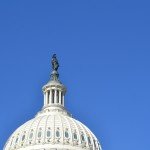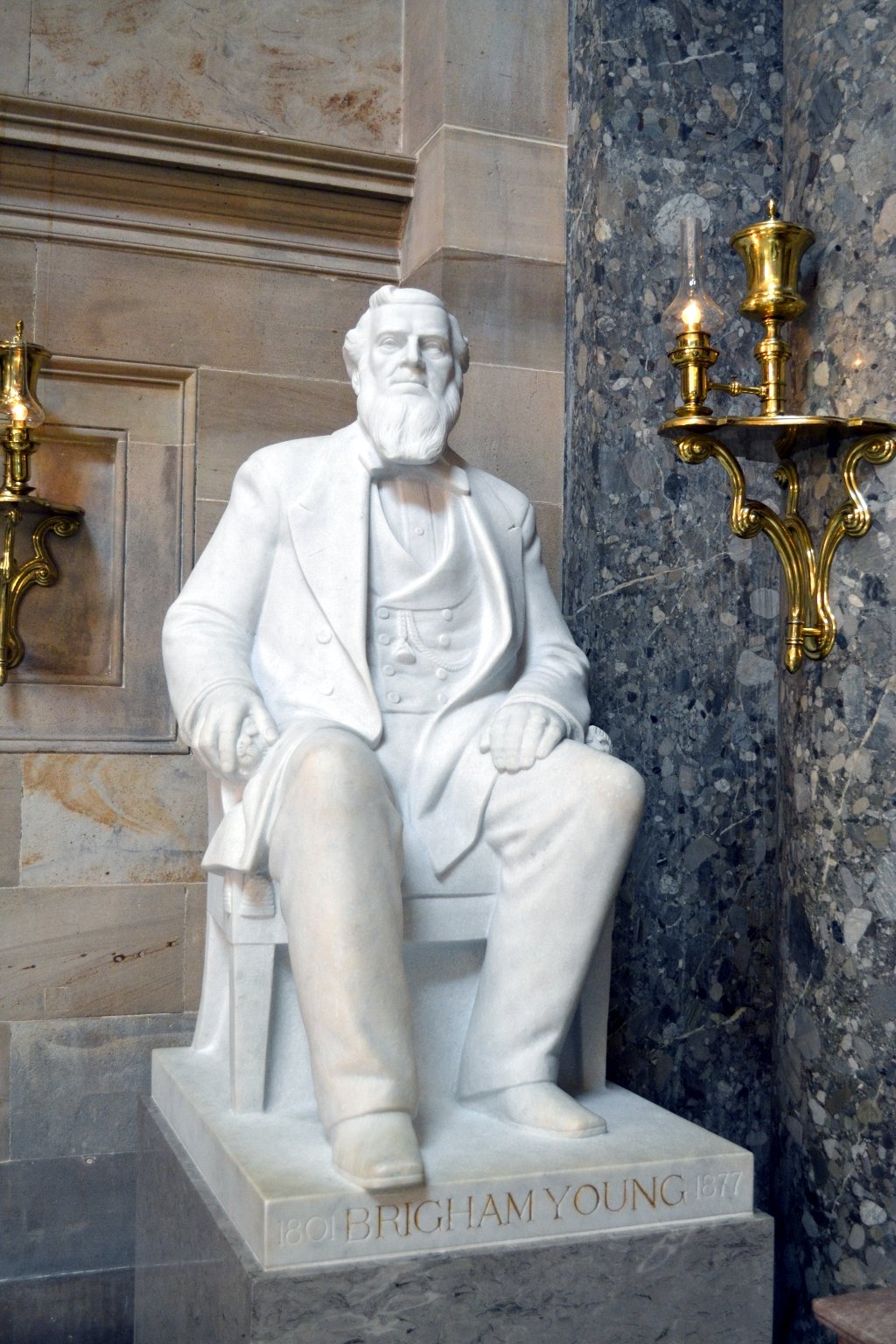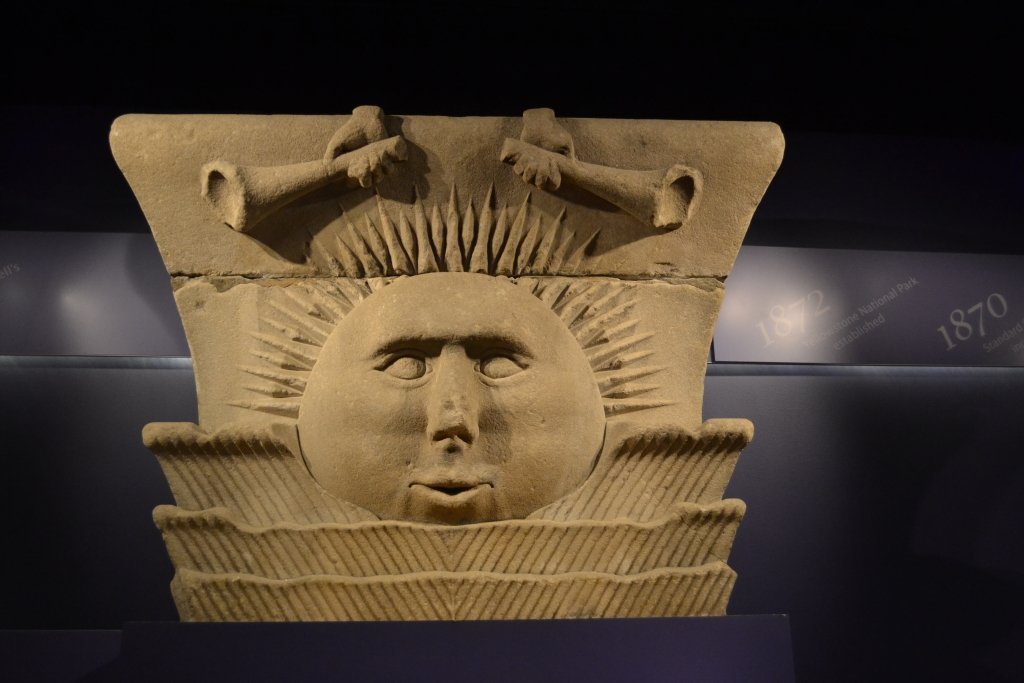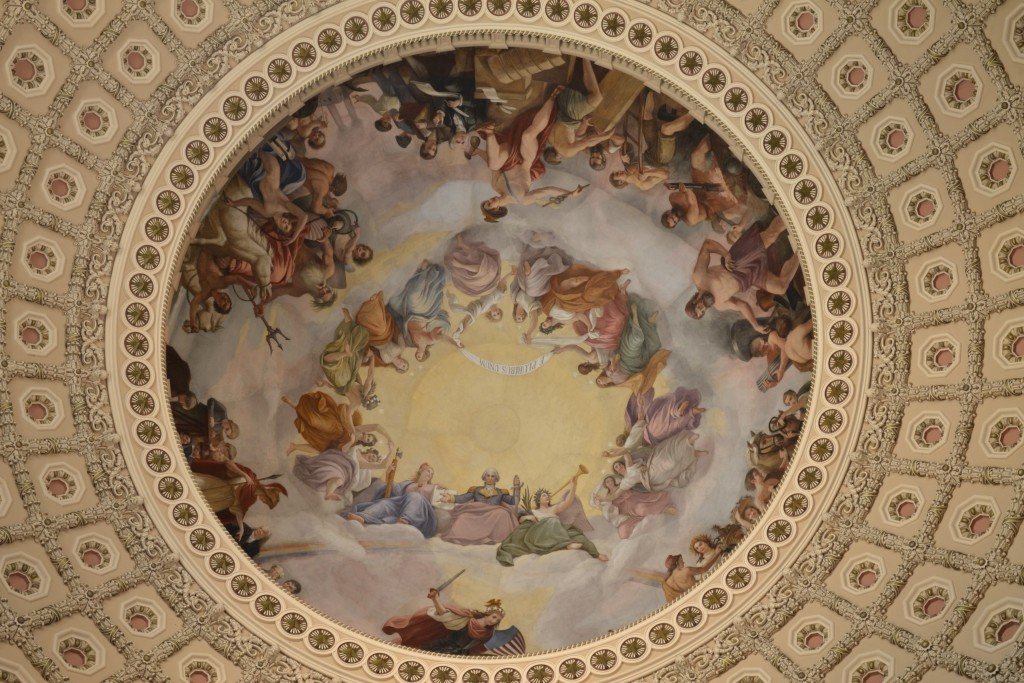[Cross posted from Sixteen Small Stones]
 My family visited Washington D.C. for a vacation this October. We had a wonderful time exploring the National Monuments and Smithsonian Museums. There is so much to learn, think about, and do, and never enough time for all of it. It was also a great time to talk with our children about our country, its history, and its founding documents and principles.
My family visited Washington D.C. for a vacation this October. We had a wonderful time exploring the National Monuments and Smithsonian Museums. There is so much to learn, think about, and do, and never enough time for all of it. It was also a great time to talk with our children about our country, its history, and its founding documents and principles.
I want to highlight a couple of unexpected encounters with Mormonism and LDS related ideas we had while there, with photos I took myself.
LDS visitors to Washington D.C. may be interested in going out of their way to see some of these Mormon monuments. And should Mitt Romney be successful in winning the election for President of the United States, interest in some of these may increase among those who are not members of the LDS church as well.
The U.S. Capitol Building is beautiful. The room where the House of Representatives used to meet from 1819 to 1857 is now the National Statuary Hall, where they display statues of prominent Americans. Each state of the Union is allowed to send two statues, of either bronze or marble, to be displayed at the Capitol, many in the statuary hall.
Our tour moved along fairly quickly, and did not provide much time for a thorough look. Fortunately, my wife noticed that there was a statue tucked away in the corner, out of the way of the tour path, that at a glance looked an awful lot like Brigham Young. She drew my attention to it and we took a moment to investigate. Sure enough, there he was.
Considering the antagonism of the U.S. Government, and the Republican Party in particular, toward the LDS Church during his lifetime, Brigham Young would never had thought that someday a large statue of himself would be on display within the very walls of the U.S. Capitol building; nor that an active member of the church would someday be the Republican candidate and serious contender for President of the United States.
Definitely something to go out of your way to see if you are visiting the Capitol, as a kind of monument.
Our second unexpected encounter with Mormonism was at the Smithsonian Museum of American History. Just steps to the left of a bronze cast of Abraham Lincoln’s actual face, taken from his plaster death mask, prominently stands a Sunstone from the original Nauvoo Temple:
I should have remembered that this was in the Smithsonian, but I didn’t. We came upon it serendipitously.
The Latter-day Saints of Nauvoo had seen the prophet Joseph Smith murdered, and were driven from the beautiful and thriving city they had built out of the swamps with their own hands by vigilantes and mobs. The U.S. government and local governments turned a blind eye and allowed their natural and constitutional rights to be trampled by mobocracy.
That one day a stone from the temple they were forced to abandon would be displayed respectfully alongside the death mask of President Abraham Lincoln in the National Museum of American History would have been a ridiculous proposition to them.
The Nauvoo Sunstone is another small monument to Mormonism that you should see if you are at the National Mall.
The next photo is only tangentially related to Mormonism, but interesting nevertheless. On the inside of the dome of the U.S. Capitol Building, at the apex above the rotunda, is a beautiful, gigantic fresco painted by Constantino Brumidi in 1865:
It depicts President Washington surrounded by characters from classical mythology in a presentation meant to represent George Washington becoming a god. The painting is titled “The Apotheosis of Washington“.
The term ‘apotheosis’ is familiar to the discussion of Mormon doctrine and Christianity. It means “deification”. In traditional Christianity, apotheosis, or theosis, refers to the idea that through Christ men can become “partakers of the divine nature.”
Mormons have often been criticized by other Christians for their belief that through Christ men can become literal partakers of the divine nature, or gods, even though that doctrine comes largely from the text of the Bible itself. And yet here, in the center focus of the U.S. Capitol building, the idea of deification is plainly represented.
Admittedly, the deification of Washington in the Capitol is more allegorical than the doctrine of the LDS church, which tends to be interpreted more literally. But even in the church, what deification actually means and what its implications are have not been revealed through the prophets. Much of what is associated with the idea in the church is unofficial speculation and folklore, not church doctrine.
The fact that it is depicted in the central artwork of the U.S. Capitol shows that apotheosis is not nearly as radical or foreign an idea as critics of the LDS Church would like to believe.
And the notion that deification is available, through Christ’s atonement, to all who are willing to submit to the will of God the Father seems uniquely compatible with the democratic sensibilities of the nation’s founders, in contrast to the divine right of kings, and the earthly deification of emperors and pharaohs in history. For good reason the LDS Church has been called a distinctly American Religion.
In America, the people are all Pharaoh. And in Mormonism, the people are all potential gods, through the grace of Jesus.
So the fresco is another thing Mormons may want to plan to see while in Washington.
There is so much to see in the Nation’s Capitol. We were only able to visit a small fraction of what we would have liked to. If there are other Mormon related items there that are readily accessible to visitors and that tourists might want to know about, please leave a comment about them.





Mormon Monuments at the U.S. Capitol and Smithsonian in Washington D.C.: http://t.co/vFASIZKA
TheMillennialStar: Mormon Monuments at the U.S. Capitol and Smithsonian in Washington D.C. http://t.co/LSgKfh5J #lds #mormon
“The fact that it is depicted in the central artwork of the U.S. Capitol shows that apotheosis is not nearly as radical or foreign an idea as critics of the LDS Church would like to believe.”
Well, it’s every bit as foreign as non-Mormon Christians think it is, so long as we are not equivocating. Mormons believe that in becoming a god, you become a glorified man. In other words your nature doesn’t change but is, I don’t know, enhanced or something. Non-Mormon Christians don’t necessarily have a problem with the idea that after death, we can become glorified men. The problem we have is with the idea that we can have the same nature as God — the God we believe in, who is not a glorified man but an immaterial, infinite and eternal spirit, of whom there is and can only ever be a single specimen.
I’m not arguing for or against either doctrine, just a point of clarification.
Agellius,
I understand what you are saying. Thank you for the clarification from a non-LDS perspective.
That seems to be a disagreement not with the concept of deification itself, but with the LDS understanding of the nature of God. That is a perfectly legitimate point of disagreement. And, as you point out, the nature of God has a direct relationship to what it means to be deified.
I know that you in particular have made an admirable effort to research the issue of the Divine Nature as it relates to Catholicism and Mormonism (I read your blog sometimes and have read some of your discussions with Bruce Nielson), so you are probably already familiar with this quote-heavy essay by Hugh Nibley, but just in case you are not:
Conflict in the Churches Between the God of the Bible and the God of the Philosophers
http://maxwellinstitute.byu.edu/publications/transcripts/?id=123
Max:
I might disagree with the concept of deification itself, depending on how it’s defined. But you’re right, a lot of that hinges on how we conceive of God’s nature; and how we conceive of a lot of other things too, for that matter. In my view we simply can’t discuss whether we “agree” on deification because we’re talking from different paradigms. It’s like discussing whether a field goal should be worth two points or three, when you’re thinking of football and I of basketball.
You’ve read my blog? I’ll be darned. : ) I’ve perused yours from time to time over the past couple years as well and enjoyed it.
I had not read the Nibley essay before, thank you. It’s interesting but frankly, with most of the quotes I found myself asking “so what’s your point?” For example, “Ignatius (1—2 Cent.): ‘There are some Christ-betrayers, bearing about the name of Christ in deceit, and corrupting the word of the Gospel . . . They do not believe in His resurrection. They introduce God as a being unknown…’ (Trall. 6).” Yes? And?
The “Deseret” stone in the Washington Monument, with its beehive and “Holiness to The Lord” inscription, could also be considered a Mormon monument. Utah’s second contribution to Statuary Hall, along with Brigham Young, was the Pennsylvanian Thomas L. Kane who, while not a Mormon, was chosen for his services to the Saints, particularly for his role in resolving the Utah War.
Great stuff Jmax.
Thanks for that information, Ardis. The Washington Monument was closed to visitors while we were there because of damage from the 2011 earthquake. So we didn’t get a chance to see the inside.
Over on my own blog, a friend also mentioned that there are a few depictions from LDS history at the National Archives that are visible while waiting in line to see the Declaration of Independence. We did go there, but we didn’t notice them, Perhaps next time.
Agellius,
Nibley is producing a progression of quotes to demonstrate, when taken in chronological context, that the earliest Christians took the scriptural descriptions of God’s body and passions rather literally, as the LDS do now.
The quotes then show the progressive imposition of the idea that God is immaterial and so wholly different from man that he is essentially “unknowable” as a corruption of the original doctrine. These classical philosophical doctrines insisted that all references to the body or passions (“love”, “sorrow”) of God were essentially Anthropomorphic and Anthropopathic deceptions, and that in reality God is incomprehensible to and wholly different from man.
The scriptures say man is created in God’s image. But according to classical philosophy God can have no image for he has no form; the scriptural statement to the contrary is an anthropomorphism that God uses to relate to humans, even though it is not in reality true.
The scriptures say God loves the world. But according to classical philosophy God can have no human emotion; the scriptural insistence to the contrary is an anthropopathism that God uses to relate to humans, even though it is not in reality true.
Nibley then draws a line directly from this classical conception of an immaterial, wholly alien God to the rejection of God by later philosophers like Nietzsche, who look at these doctrines and say it is impossible to believe in such a God.
The Ignatius quote is meant to show that the idea that God is “unknowable” was considered a heresy by the earlier Christians.
Another Nibley article you might find interesting is:
The Passing of the Primitive Church: Forty Variations on an Unpopular Theme
http://maxwellinstitute.byu.edu/publications/transcripts/?id=116
This one attempts to demonstrate that the biblical text, the sayings of Jesus, and the statements of the earliest Christians show that they expected the church to be completely lost to apostasy, and that there is a conflict between christian eschatological doctrines and the insistence of a historical survival of the church.
This one really does require a close look at the footnotes, but it is worth it I think.
Max:
I appreciate you taking the time to respond so thoroughly. I’m not sure how far you want to take this discussion in this context. Should I respond here? Or would you rather do it by private email?
Agellius,
You are right that our conversation is drifting wide of the primary topic. Feel free to shoot me an email when you have time (jmaxwilson at sixteensmallstones dot org). I’ll try to respond as my time permits.